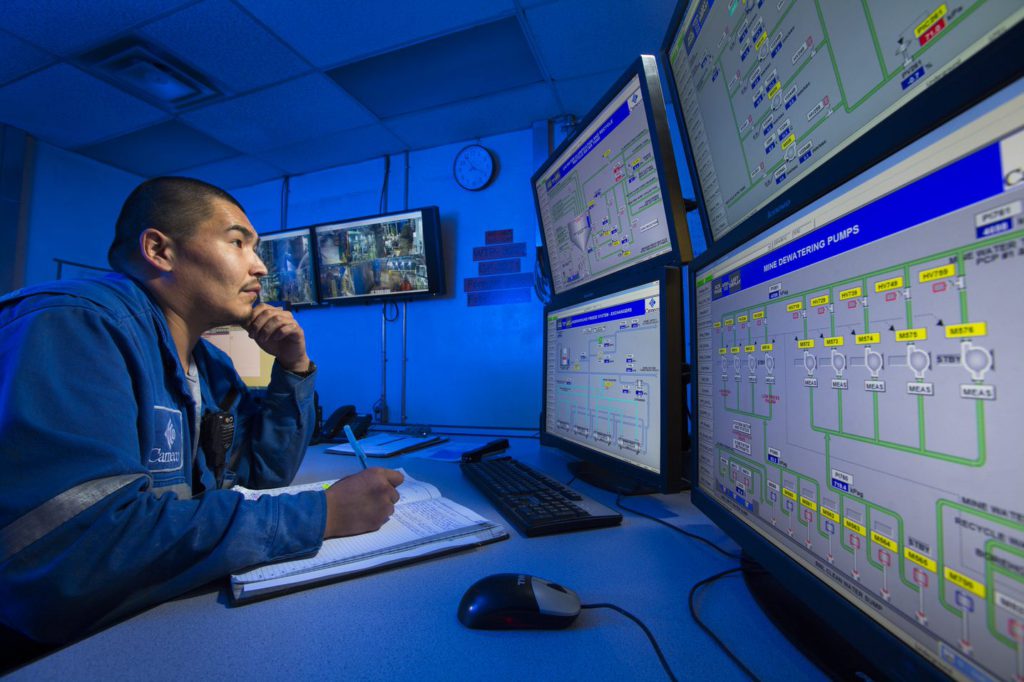JV Article: Mining companies should approach digital transformation as a ‘marathon, not a sprint,’ says Cameco’s Mark Leach


Mining companies that embrace digital transformation can reduce their costs, boost profits, and improve safety and environmental performance, according to Mark Leach, vice-president of business technology services for Cameco (TSX: COO; NYSE: CCJ).
He says that digitalization “allows work processes to be streamlined, and provides the data necessary for better decision-making and improving operational efficiencies.”
A pure-play nuclear fuel company, Cameco is one of the world’s largest uranium producers, with operations and investments across three continents that span the nuclear fuel cycle from exploration to fuel manufacturing.
According to Leach, the company adopted digital transformation to improve productivity, safety, and sustainability by optimizing its business practices and operations.

“We were looking for opportunities that drove greater productivity and efficiency by integrating digitization into our day-to-day business processes,” he explains. “We also wanted to drive a culture of innovation across the company that created tangible benefits for our employees, stakeholders, and shareholders.”
While companies in the early days of digital transformation often “chased the latest shiny toy,” notes Leach, he says that many of them “ended up expending a lot of time and effort – and sometimes a huge amount of money – without any tangible impacts on their business performance. So, we tried to learn from those companies and sought to do it differently by picking the digital technologies and tools that would make sense for our business and that we would derive value from,” he says
To ensure Cameco met the business objectives of its digital transformation program, the company has chosen six digital themes to guide it through the digitization process.
These include robotic and operational hardware automation; integrated mining and planning; simulation and asset optimization; modern workplace; artificial intelligence (including machine learning); and analytics and decision support.
Leach says that its approach to robotic and operational automation includes both mechanical and software automation. “This allows for intelligent process automation that can improve the efficiency of the procedural activities common to all mining companies such as finance, procurement, and maintenance.”
Whereas the integration of mining and planning, he says, is helping to improve Cameco’s day-to-day operations at its mining areas “by looking to see what is available on the industrial internet of things (IIoT) for activities such as short interval control and scheduling, and mine planning, management, asset management and reliability, and optimization.”
He adds that the company is also exploring digital twinning, which involves “the generation of a virtual representation of a system that is updated using real-time data, and then uses simulation and asset optimization to support improved decision-making.”
Leach says the last two digital themes of Cameco’s digital transformation program — artificial intelligence (AI) and analytics and decision support – were separated from each other as the company viewed them as two different areas of application.
“If any company says that it has a digital program and does not include these last two areas, then I would say they don’t have a digital program,” he notes.
For example, he says that AI and machine learning allow predictive analytics to improve asset management by identifying potential faults or problems with equipment before they occur, leading to more effective maintenance planning.
While data is “absolutely fundamental to the digital transformation of your company’s operations,” says Leach, he also sounds a note of caution.
“The use of AI and machine learning generates tonnes of data, with a lot of it not of sufficient quality to conduct meaningful analysis and evaluation.”
Therefore, he believes that mining companies should ensure they have a base data capability, either in-house or externally, to manage the vast amount of data.
The digital transformation of a business’s operations, says Leach, also involves considerable engagement and collaboration between employees and “so should be viewed as a marathon, not a sprint.”
To manage this data flow and unlock improved employee productivity, Cameco is using existing technologies such as Microsoft 365 and SharePoint.
“We’ve been using these technologies to transform our data centres and improve remote work capabilities for some time, and has allowed many of our employees to work remotely a few days a week since around 2016,” says Leach.
Consequently, he notes that the company was well prepared to absorb the impacts of the Covid-19 pandemic into its business continuity planning processes.
Working with a local tech partner, Cameco created the Powerbar concept, and embedded it as part of Microsoft Teams, which provides technical support with instant answers to “how-to” questions via live video chats with experts.
“A lot of our staff are carrying out physical activities, so a computer is an incidental part of their day and not their focus,” says Leach. “The Powerbar has proven extremely effective for remote training, and so we are now looking to expand its use to encompass other applications beyond Microsoft 365.”
The preceding Joint Venture Article is PROMOTED CONTENT sponsored by WBM TECHNOLOGIES INC. and produced in co-operation with The Northern Miner. Visit www.wbm.ca for more information.
Comments